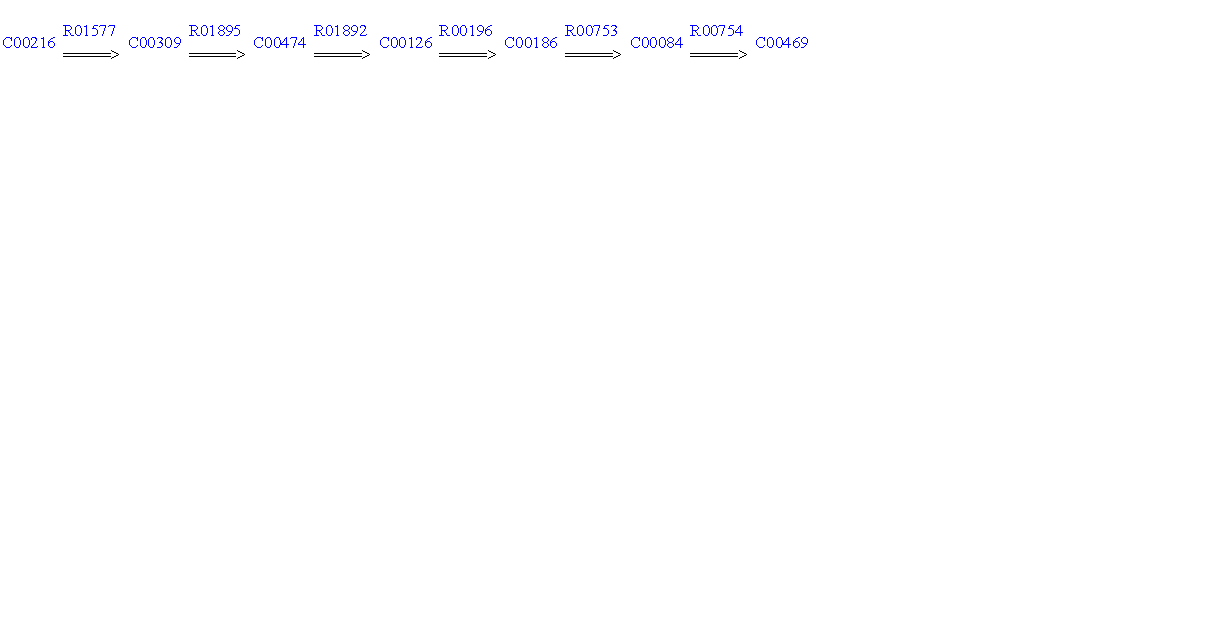Team:Illinois-Tools/Modeling
From 2009.igem.org
(→Modeling) |
(→Modeling) |
||
| Line 123: | Line 123: | ||
The Illinois - Tools team can model any pathway, whose starting and ending compounds are stored in the Kegg database. The algorithm developed by the team takes information from the Kegg database and finds the most optimum pathway, based on the weights selected by the user. Examples include the pathway with the least number of steps, or the pathway that uses the least amount of ATP. | The Illinois - Tools team can model any pathway, whose starting and ending compounds are stored in the Kegg database. The algorithm developed by the team takes information from the Kegg database and finds the most optimum pathway, based on the weights selected by the user. Examples include the pathway with the least number of steps, or the pathway that uses the least amount of ATP. | ||
| - | The Illinois-Tools team also wishes to use this algorithm to help other IGEM teams in modeling their own desired pathways. For example, the team | + | The Illinois-Tools team also wishes to use this algorithm to help other IGEM teams in modeling their own desired pathways. For example, the our program can help the Illinois wetlab team in modeling their pathway. The wetlab team's project is about a binary decoder that senses 2 inputs, such as 2 sugars, and produces one of four possible outputs, which are fluorescent proteins, based on the combination of inputs. |
| - | + | Go to [https://2009.igem.org/Team:Illinois Illinois] | |
| - | https://2009.igem.org/Team: | + | |
| - | + | A possible future expansion of their project would be to model these pathways computationally, and see if it would be experimentally feasible. Also, once the protein output is obtained, they want to check if these can be used to produce useful compounds like biofuels. | |
| + | To help this team reach its goals, our program, IMPtools, was able to model a pathway from D-Arabinose to Ethanol. Here is the result. The labels are the Kegg IDs for compounds. | ||
| + | |||
| + | [[Image:rxn.png]] | ||
| + | |||
| + | |||
===The Algorithm=== | ===The Algorithm=== | ||
. | . | ||
Revision as of 03:13, 22 October 2009

Modeling
The Illinois - Tools team can model any pathway, whose starting and ending compounds are stored in the Kegg database. The algorithm developed by the team takes information from the Kegg database and finds the most optimum pathway, based on the weights selected by the user. Examples include the pathway with the least number of steps, or the pathway that uses the least amount of ATP.
The Illinois-Tools team also wishes to use this algorithm to help other IGEM teams in modeling their own desired pathways. For example, the our program can help the Illinois wetlab team in modeling their pathway. The wetlab team's project is about a binary decoder that senses 2 inputs, such as 2 sugars, and produces one of four possible outputs, which are fluorescent proteins, based on the combination of inputs.
Go to Illinois
A possible future expansion of their project would be to model these pathways computationally, and see if it would be experimentally feasible. Also, once the protein output is obtained, they want to check if these can be used to produce useful compounds like biofuels.
To help this team reach its goals, our program, IMPtools, was able to model a pathway from D-Arabinose to Ethanol. Here is the result. The labels are the Kegg IDs for compounds.
The Algorithm
.
 "
"
